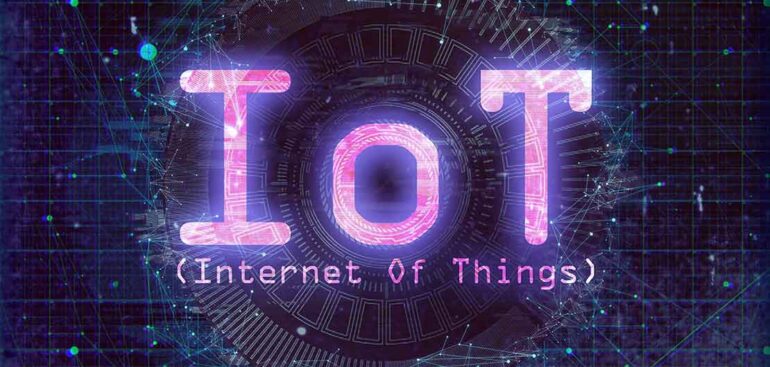$1.7 Trillion, $745 Billion, $318 Billion! With market potential estimates as diverse as their scope of studies, Internet of Things (IoT) has emerged from being dismissed as a much-hyped pipe dream to be an inevitable future, although with challenges whose solutions encompass factors beyond technology. With a Gartner study projecting the number of connected devices to reach 25 billion globally by 2021, IoT has expanded outside of ‘home automation domain’, with realistic, disruptive and commercial applications across diverse industries.
Given the initial hype, promotion and confusion associated with any enabling technology, it is easy to over simplify the concept and perceive (and at times believe!) IoT to be merely about connecting devices and using sensors to collect data. While IoT currently ranks among the must-have priorities of a majority of organizations worldwide, market studies by technology majors such as CISCO have highlighted a significant failure rate (of above 60%) of IoT projects at ‘Proof-of-Concept’ stage.
With a critical need to maintain integrity and privacy of the data being generated, security remains a cornerstone of all IoT project implementations. However, a single point of focus on security often overlooks other essential elements for a successful implementation. A realistic and value-driven strategy, collaboration between IT and business leaders, a need to forge key partnerships towards ensuring a supportive ecosystem, enabling an inclusive, technology-focused and customer-centric culture, and a need to relook at talent strategy are equally important to ensure success.
Strategy is THE Essential Ingredient for Success
“A vision without a strategy remains an illusion”. The quote by Lee Bolman underscores the key reason for failure of IoT projects even at the proof-of-concept stage. Given the perception of IoT being the secret sauce to success in an increasingly convergent world of digital technologies, a majority of players are rushing in to adapt IoT into their organizational DNA, without really chalking out a robust strategy.
IoT implementation goes beyond merely connecting devices on Internet. A successful strategy starts with identifying the business need, determining what data needs to be collected, mapping the process of collection from edge and operationalizing it to enable real-time decisions, and how it will be used to meet the business need. A successful IoT strategy focuses on deriving the value (for customers and business) from the data being collected, while balancing the need for security and ease of use.
Successful Implementation - Collaboration between IT and Business Leaders is the Key
An IoT strategy is only as effective as the collaboration of multiple stakeholders for its effective implementation. There is a need for business leaders to invest time towards understanding the essentials of IoT so as to appreciate the need for investment in terms of time, resources and more importantly, intent.
Business leaders typically tend to focus on strategy, processes and milestones, while IT leaders place greater emphasis on technologies, expertise and vendors. An ineffective or even a non-existent communication between the IT and business leaders results in the later perceiving IoT as more of a technical challenge, rather than a potential value enabler for clients.
Given the strategic importance of IoT, leaders or influencers from other key teams within an organization such as finance, product development, sales and marketing, service and support, and legal/compliance need to be involved with IoT initiatives.
Partnerships remain Critical for Vendors and Organizations Implementing IoT Projects
Strategic partnerships empower IoT solution vendors to expedite their time-to-market, while bridging the gaps in their portfolio in terms of security, market coverage and budget. While a highly fragmented partner ecosystem empowers organizations to pick and choose their partners, there is also a risk of teaming up with a partner who fails to add value in terms of critical support functions such as security, reach and ease of implementing technology advancements.
A key element in successful IoT projects has also been the empowerment of product teams to collaborate with vendors and other third parties. The sheer complexity of architecture, existence of siloed platforms, processes and procedures, and lack of expertise with manufacturers to manage the ever growing need to connect multiple devices and technologies demand engagement of partner eco system at each stage of IoT project life cycle. This includes sharing of data and insights towards addressing a key challenge in enterprise IoT adoption – Interoperability.
Nurturing an ‘Inclusive’, ‘Technology and Customer-focused Culture’
Often overlooked because of a single point focus on security, a technology-focused organizational culture has been effective in driving the success of IoT initiatives. A culture which accepts and even celebrates change fosters innovation. Encouraging and empowering multiple teams to work together towards finding a solution for an IoT-specific issue or adding value to a customer has often resulted in higher success rates of IoT projects.
A majority of businesses with a successful track record of IoT project implementation have initially leveraged the technology platform to enhance employee value prior to full-scale implementation as an organizational strategy. This approach has enabled employees to experience improvements in their productivity, thus transforming them into ambassadors or catalysts of change. An opportunity to ‘re-skill’ in the context of redefinition of roles goes a long way towards allaying employee resistance to IoT strategy implementation.
It Pays to Plug the Skill Gap
Convergence of AI and IoT has redefined the role of talent in organizations, with knowledge of concepts such as analytics, Big Data, UI/UX design, information security, blockchain and programming ranking among must-have skill sets. Given a need to interpret and use the data being generated, soft skills such as analytical thinking approach and an ability to collaborate and communicate beyond organizational silos towards understanding and visualizing the big picture rank among the differentiators for success.
While the government, industry and educators can facilitate opportunities and avenues for learning, the key to success solely remains with the work force themselves. Either upskill or perish has always been the secret sauce for success, but will be more of a critical necessity in an AI-integrated digital economy!
